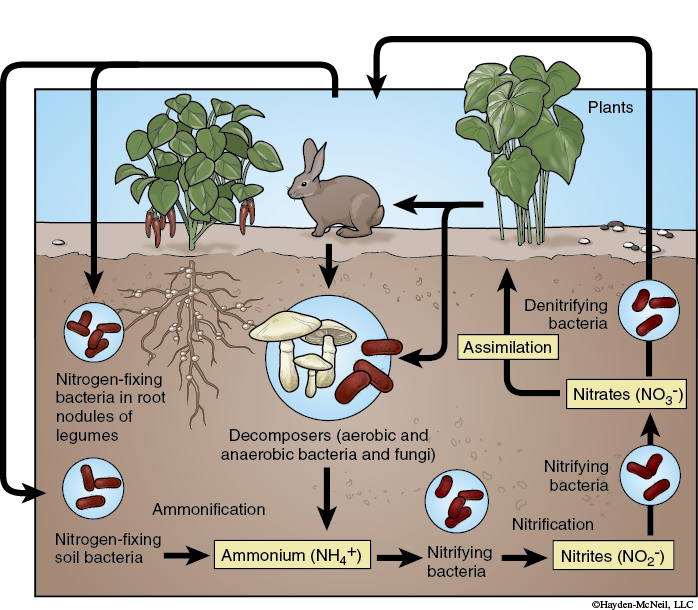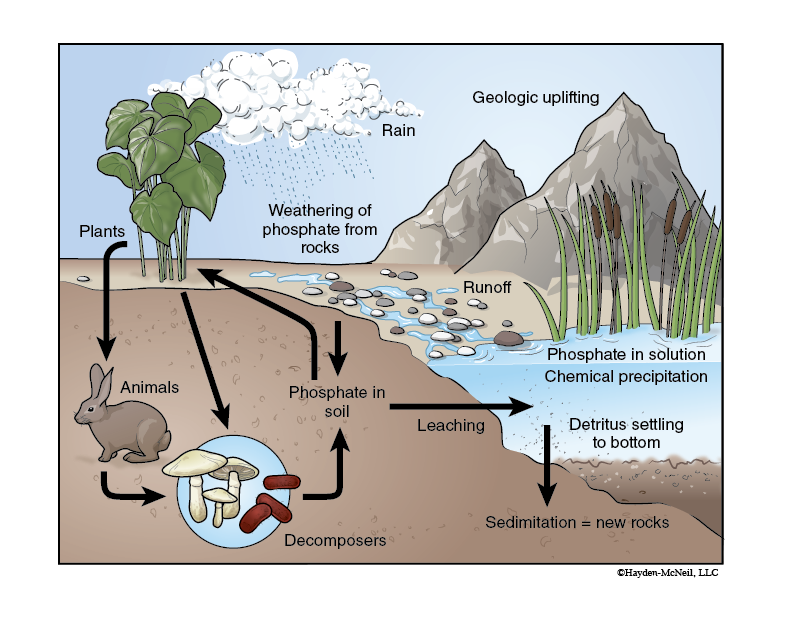Chapter 2. ECOSYSTEM ECOLOGY— AQUATIC II—WATER ANALYSIS
Learning Objectives
General Purpose
Conceptual
- Be able to determine the change in an ecosystem caused by either biotic or abiotic factors.
- Be able to determine the impact that nutrient cycles have on ecosystems.
General Purpose
Energy flows into and out of ecosystems, whereas nutrients often cycle between several different forms within the ecosystem. Understanding this cycling of nutrients is fundamental to a full understanding of ecosystem ecology. Some forms of nutrients are available to the organisms of the ecosystem and other forms cannot be used directly by many of the organisms in the ecosystem. These unavailable nutrients can act as a reservoir that under the correct circumstances can become available to the organisms of the ecosystem. Since the nutrients in their different forms can be interconverted, it is important to be able to assess the levels of the differing forms of a nutrient within an ecosystem to determine the potential impact on the ecosystem.
Aside from carbon, two primary nutrients in an ecosystem are nitrogen and phosphorus. Figure 6-1 shows a typical nitrogen cycle for a terrestrial ecosystem.

For the nitrogen cycle, the atmospheric nitrogen represents a large reservoir that is unavailable to most organisms.
Phosphorus in an ecosystem can exist in a number of chemical forms. The form of phosphorus that is the most important biologically is phosphate (PO43−). Phosphate can be either organic (part of an organic molecule as a functional group) or inorganic (as part of soil or rock in complexes with other minerals). A general representation of the phosphorus cycle is shown in Figure 6-2.

In the phosphorus cycle, the reservoir that is unavailable to organisms is in rock. The release of this phosphorus (in the form of inorganic phosphate) by weathering can make it available to some organisms.
View the following video to see and hear more about the cycling of nutrients in an ecosystem:
Since the University Lake ecosystem is part of a watershed, nutrients flow in and flow out. The inflow comes from Bayou Duplantier and from direct runoff from the adjacent land and through storm drains that empty into the lakes at various places. Water also flows out into Bayou Duplantier as it continues on its natural course.
This inflow and outflow can allow nutrients to be added to and removed from different forms present in the ecosystem. In this lab you will examine the levels of various nutrients that are characteristic of an ecosystem.
Pre-Lab Quiz
Proceed to the Pre-Lab Quiz